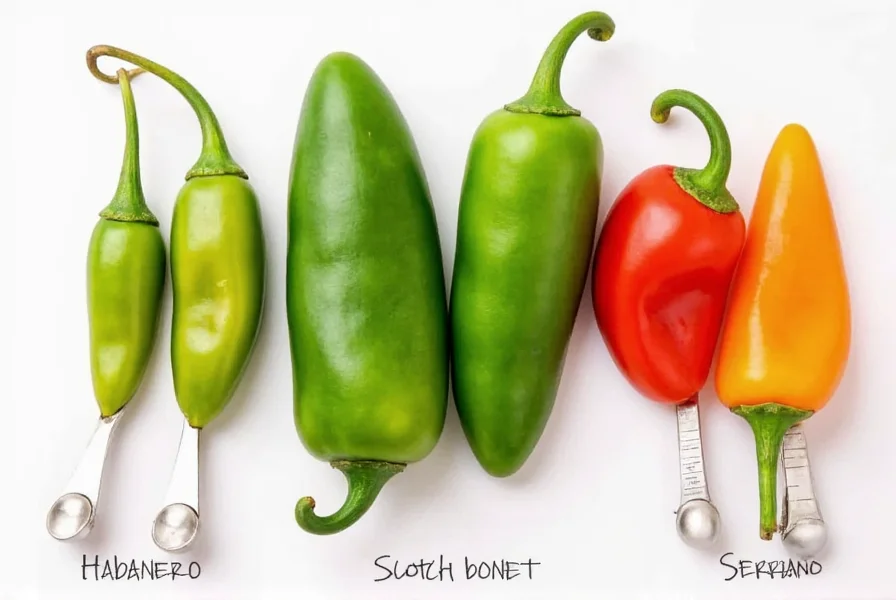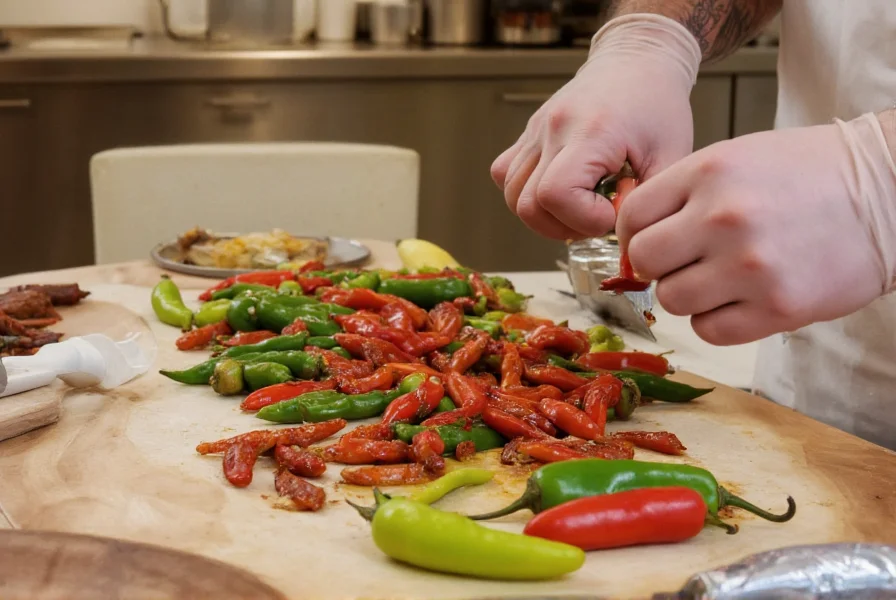When you're preparing Caribbean or West African dishes that call for bonnet peppers but can't find them, knowing the right substitute makes all the difference in your culinary results. Bonnet peppers, known scientifically as Capsicum chinense, deliver distinctive fruity notes with intense heat that's essential to authentic jerk seasonings, stews, and sauces.
Understanding Bonnet Peppers and Substitution Needs
Bonnet peppers, sometimes called bonney peppers
or goat peppers,
rank between 100,000-350,000 Scoville Heat Units (SHU), placing them in the same heat category as habaneros. These vibrant peppers feature a unique tapered shape and fruity, citrusy flavor profile that's difficult to replicate exactly. When searching for bonnet pepper alternatives, cooks typically face two challenges: regional availability issues and varying heat tolerance among diners.
Unlike generic hot pepper substitute
recommendations, effective bonnet pepper replacements must consider both heat intensity and flavor characteristics. The best substitution depends on your specific recipe and desired outcome. For authentic Caribbean cooking, maintaining the fruity undertones is as crucial as matching the heat level.
Top Bonnet Pepper Substitutes Compared
Not all hot peppers work equally well as bonnet pepper alternatives. The following comparison helps identify the most appropriate replacement based on your culinary needs:
| Pepper Substitute | Heat Level (SHU) | Flavor Profile | Best Recipe Applications | Substitution Ratio |
|---|---|---|---|---|
| Habanero | 100,000-350,000 | Fruity, citrusy, floral | Jerk chicken, sauces, stews | 1:1 |
| Scotch Bonnet | 100,000-350,000 | Sweeter, tropical fruit notes | Caribbean dishes, chutneys | 1:1 |
| Aji Chombo | 100,000-300,000 | Earthy, slightly smoky | Cuban and Latin American dishes | 1:1 |
| Serrano with Citrus | 10,000-23,000 | Grassy, bright with citrus addition | Salsas, marinades | 2 peppers + 1 tsp lime zest |
| Jalapeño + Bell Pepper | 2,500-8,000 | Milder, vegetal with fruitiness | Family-friendly dishes | 1 jalapeño + ½ bell pepper + pinch cayenne |
Regional Substitution Strategies
When searching for bonnet pepper substitute for jerk chicken
, regional authenticity matters. In Caribbean cooking, habaneros provide the closest match to bonnet peppers' distinctive flavor profile. For West African dishes like Nigerian pepper soup, scotch bonnets (which are botanically identical to bonnet peppers but named differently in some regions) work perfectly.
If you're adapting traditional recipes for sensitive palates, consider the mild bonnet pepper alternative for sensitive palates
approach: use half the amount of habanero combined with roasted red bell peppers. This maintains the fruity essence while significantly reducing heat. For those wondering where to buy bonnet peppers near me
, check specialty grocery stores, Caribbean markets, or consider growing your own from seeds during warmer months.
Practical Substitution Tips
When replacing bonnet peppers in recipes, remember these professional kitchen techniques:
- Always remove seeds and white membranes to control heat levels, regardless of which substitute you choose
- For recipes requiring whole peppers (like pickling), choose substitutes with similar size and shape
- Add citrus elements (lime or orange zest) when using non-fruity peppers to mimic bonnet peppers' distinctive flavor
- When making hot sauces, blend milder substitutes with a small amount of cayenne for balanced heat
- Test your substitute mixture before adding to the entire recipe—heat levels vary between individual peppers

Preserving Fresh Peppers
If you manage to find fresh bonnet peppers or their substitutes, proper storage extends their usability. Freeze whole peppers in airtight containers for up to 6 months—they'll be easier to handle when frozen solid. For immediate use, store in a paper bag in the vegetable crisper drawer for 1-2 weeks. Never store hot peppers in plastic bags, as moisture accelerates spoilage.
Understanding the bonnet pepper heat level compared to other chilies
helps prevent recipe disasters. Remember that environmental factors affect heat intensity—peppers grown in hotter, drier conditions develop more capsaicin. When substituting, start with less than the recipe suggests and adjust to taste.

Final Substitution Guidance
The key to successful substitution lies in matching both heat and flavor characteristics. For most authentic results, habaneros serve as the ideal bonnet pepper replacement in Caribbean cooking. When exploring caribbean pepper substitutes for recipes
or african bonnet pepper replacement options
, consider your specific dish's requirements rather than seeking a universal solution. Professional chefs often blend multiple pepper varieties to achieve the complex flavor profile of bonnet peppers when they're unavailable.











 浙公网安备
33010002000092号
浙公网安备
33010002000092号 浙B2-20120091-4
浙B2-20120091-4